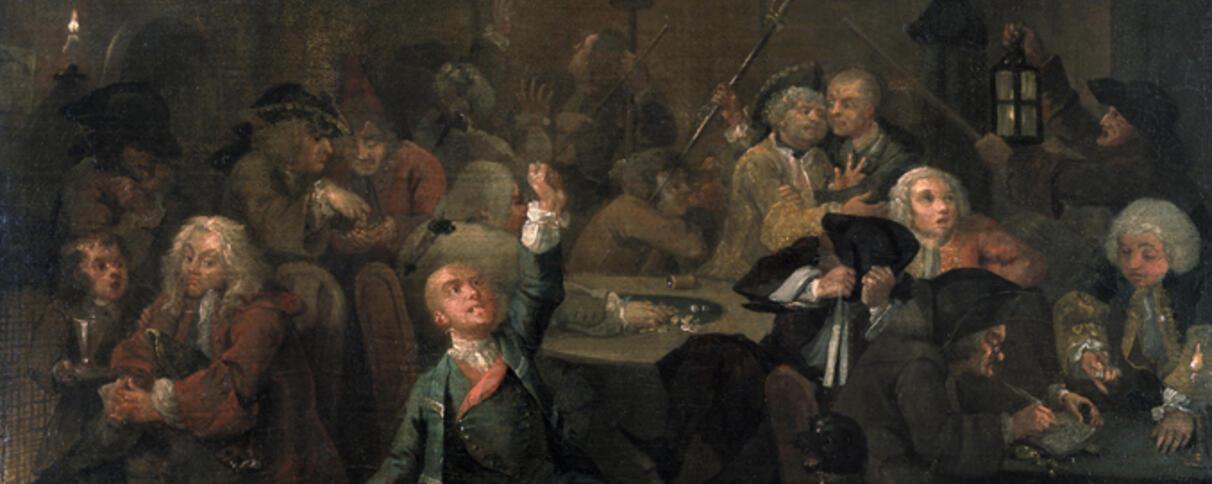Two hundred years ago today, on 22 November 1815, Sir John Soane’s beloved wife Eliza died at 1.20 in the afternoon, an event from which her heartbroken husband never entirely recovered, despite living on for another twenty-two years. The couple had been married for thirty-one years and had had four children, two of whom had died in infancy.
Earlier in the year Eliza began to suffer from serious ill health. Eventually gall-stones were diagnosed and in August 1815, accompanied by her friend Sarah Smith, she went to Cheltenham to seek a cure. By the end of September she was feeling much better. In the meantime, however, the couple’s wayward younger son George, emerging enraged from the King’s Bench Prison where they had allowed him to be confined for debt in the hope of modifying his behaviour, published two anonymous articles in The Champion newspaper of 10 and 24 September viciously attacking his father’s architecture. On being shown them by her husband on 13 October, Eliza exclaimed: ‘These are George’s doings – he has given me my death blow – I shall never hold up my head again.’
Returning to London, she was able to take short walks and visit friends. Indeed, she had been well enough on 20 November (as her grieving husband later recorded in his diary) to pass ‘the evening at Mrs Kinderley’s – for the last time – in great spirits and as usual the delight of all the party!’ The following day, however, she suffered a relapse and, as her obituary in the Gentleman’s Magazine for December 1815 records: ‘…A larger gall-stone than common, in passing from the gall-bladder through the biliary duct, appears to have occasioned a bursting of the gall-bladder, when a mortification and almost immediate death ensued.’
Distraught, Soane blamed her death entirely on George, framing the two offending articles and hanging them prominently in the house with a pendant which read ‘Death blows given by George Soane 10th & 24th Sept. 1815’.
Sarah Smith, who had been alerted by Soane’s Butler arriving in a post-chaise to fetch her to her friend’s bedside, but who had arrived too late to see her alive, kept a rough diary of events in the days immediately following Eliza’s death, recording the visits of several friends who came to pay their last respects. On the evening of Friday the 24th the coffin, ‘the last sad receptacle’, was brought into the house and on the following Tuesday she records that ‘the sad remains [were] closed between 2 & 3 o’clock’ in the presence of the undertaker. On Thursday 30th the coffin was moved to the Library where it was covered with a pall and ostrich feathers and attended by the servants who sat up all night by candlelight.
The funeral took place the following day, 1 December, at 10.00 am and she was buried in the burial ground of St Giles-in-the-Fields at St Pancras. ‘Melancholy day indeed!’ recorded Soane in his diary, ‘The burial of all that is dear to me in this world, and all I wished to live for.’ Over the next few months the grief-stricken architect designed a monument to her memory, complete with an epitaph composed by the novelist friend of the couple, Barbara Hofland. And in due course he was also buried in the tomb following his death on 20 January 1837, as was their elder son John, who died prematurely in 1823.
Many years later in 1924 this striking monument is said to have provided the source of inspiration for Sir Giles Gilbert Scott when he was designing the iconic red K2 telephone box.
Update: On Monday 23 November a party of Trustees, staff and supporters of the Soane lay a wreath at the tomb to commemorate the 200th anniversary of Eliza’s death. Acting Director, Helen Dorey, gave a speech, noting Eliza's own collecting activities and how vital she was to her husband and the Museum. See photographs of the event below.
Find out more about Eliza’s death and the affect it had on Soane in our current exhibition Death and Memory: Soane and the Architecture of Legacy (23 October 2015 – 26 March 2016). Admission free. The book At Home with the Soanes, written by Soane Archivist Sue Palmer, explores Eliza’s daily life further, and is available from the Soane Shop and online.
The Death of Eliza Soane
This is an example large signpost to test the default page
This is a piece of link text
